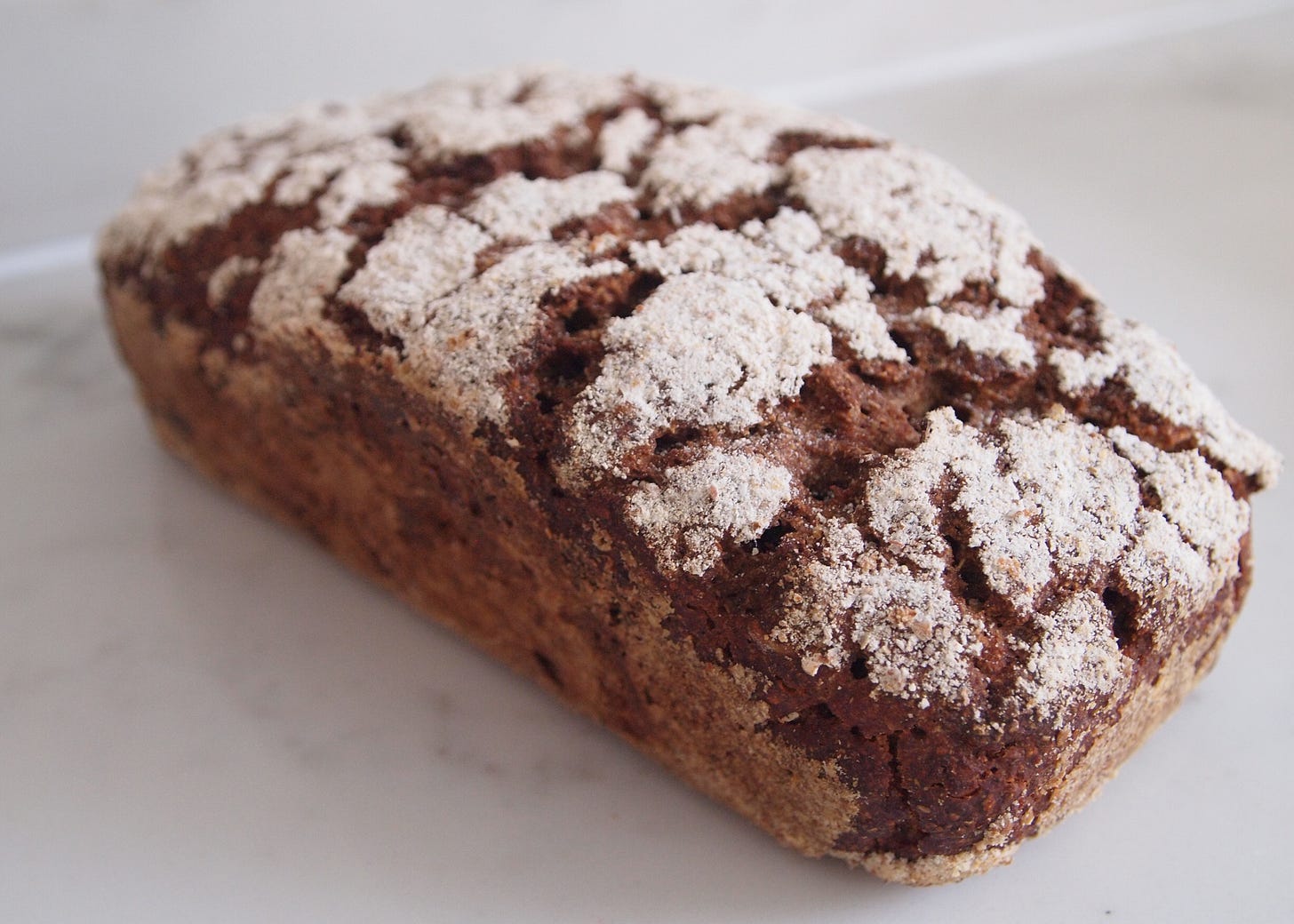Recipe - Rye Baker's Loaf
A baker's loaf is a smaller loaf of bread made with excess dough from the day's production, left for the night baker...
This recipe goes alongside 'How to Eat Alone' episode 5, Baking at Night. You can listen to the episode here.
Though baking recipes are usually not for one portion, traditionally, a baker's loaf is a small loaf of bread made with excess dough from the day's production. It would be left for the night baker, who would bake it and eat it for their breakfast, so it's quite literally the perfect recipe for one. This is a recipe for a 100% rye loaf. I have chosen to offer you rye bread because, during my first job as a baker, there would very often be a teeny tiny rye loaf for me to bake, usually in a circular shaped banneton, which meant that it would fit into my coat pocket almost perfectly. I started nicknaming these bakers loaves 'pocket ryes' and loved taking them home after a long shift. Plus, rye is a super easy bread to make, it doesn't require as much time or fuss as a white loaf. For ease, I have used dried yeast, not sourdough as it is far quicker.
Time: 10 minutes to prepare, 1.5 (minimum) proofing time, 45 minutes baking.
Faff Level: 6/10
Makes: One small loaf for one human to enjoy
Plant Based Diets: This recipe is suitable for veggies and vegans.
Ingredients:
130 g warm-ish water (when you're baking bread, always WEIGH your water)
180 g rye flour
1 teaspoon dried, active yeast
1 teaspoon salt
1 tbsp molasses (or you can use honey, agave, treacle, maple syrup - anything thick and sticky)
1 tsp salt
100 g seeds (Optional - use whichever seeds you have at home)
Directions:
1. Mix water, yeast and molasses (or alternative) together.
2. Add in flour, salt and seeds if using them, then mix until flour is fully integrated.
3. Coat a small loaf tin with oil, then liberally dust the oil with rye flour.
4. Using very wet hands because the rye will have the consistency of sticky cement, manipulate the dough into a ball, then elongate to fit the loaf tin. Drop the dough into the tin. As it proofs, it will find its way to the edges of the tin.
5. Dust the dough with more rye flour, as rye often dries out quite quickly.
6. Proof for between 1.5 - 3 hours. You will know your dough is ready to bake, because cracks would have formed in the flour. Whilst you're waiting for the dough to rise, preheat the oven to 220oC.
7. When you're ready to bake, place the loaf tin in the middle of the oven, close the door and turn the heat down to 200oC. Bake for 35 minutes.
8. After 35 minutes, take the loaf out of the tin and bake for a further 10 minutes.
9. Ideally, you should leave rye to set overnight once it's out the oven, but I do understand if you can't wait that long!


